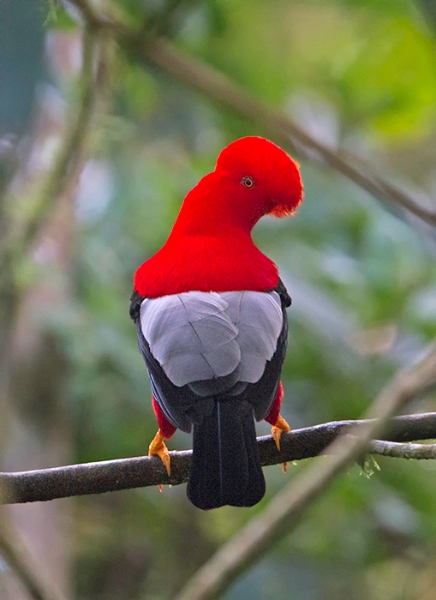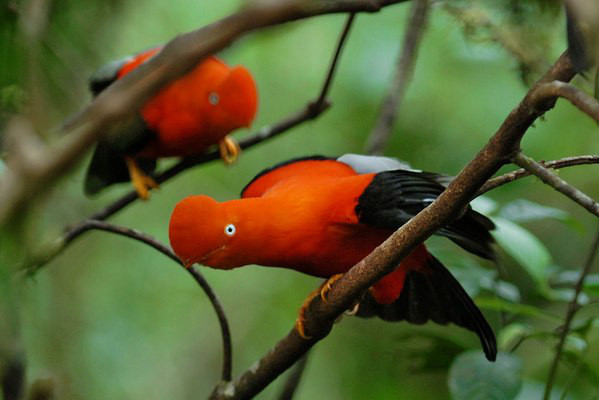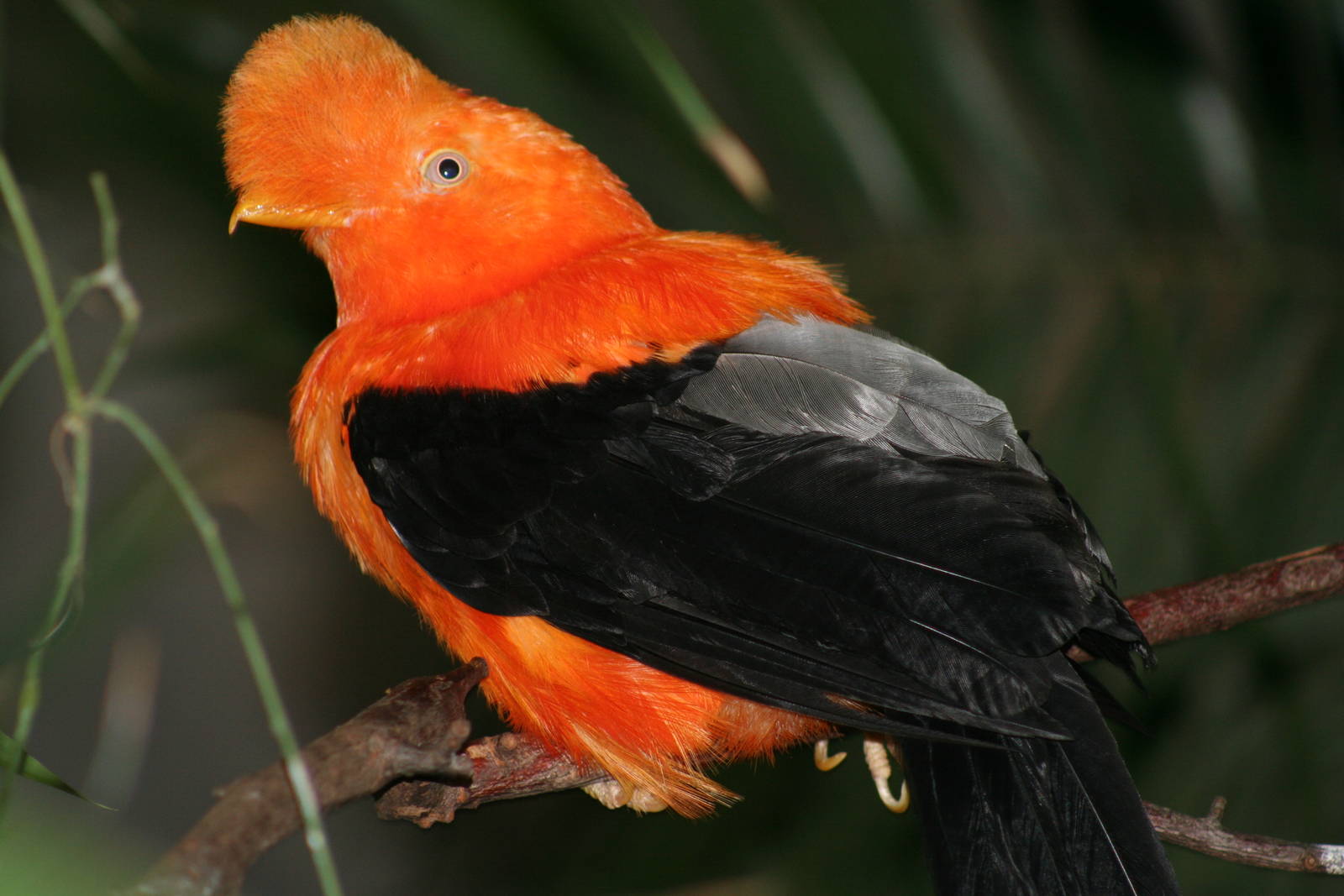
Rupicola peruviana
TAXONOMY
Rupicola peruviana Latham, 1790.
OTHER COMMON NAMES
French: Coq-de-roche pйruvien; German: Andenklippenvogel;
Spanish: Gallito de Rocas Peruano.
PHYSICAL CHARACTERISTICS
Cocks-of-the-rock have sharp and powerful claws to secure
good grips on branches during courtship. The pigeon-sized
cocks-of-the-rock, with their teased-out feathers on the forehead,
back and wings, have a particularly striking coloration.
While the female is a drab brown color, the male’s plumage is
scarlet; the head is decorated with a helmet-like erect crest.
DISTRIBUTION
This species is distributed through the Andes from extreme
western Venezuela through Colombia, Ecuador, and Peru
to western Bolivia, ranging between 3,000 and 7,900 ft
(900–2,400 m).
HABITAT
This species inhabits the lower to mid strata of tropical montane
forest.
BEHAVIOR
When flying, a loud “hissing” sound is produced from the
modified remige of the wing tip. A spectacular array of vocalizations
are produced, including different “popping” noised
produced by snapping the bill. Unlike the Guianan cock-ofthe-
rock (Rupicola rupicola), the Andean cock-of-the-rock will
only dance in trees, rather than on the ground as well.
FEEDING ECOLOGY AND DIET
Like most cotingas, cocks-of-the-rock consume fruits primarily,
but will consume more animal matter as fruits become
scarce. Captive individuals are known to eat small lizards (Anolis
sp.) and baby laboratory mice (Mus sp.).
REPRODUCTIVE BIOLOGY
Nests, built by the female, are typically located near the male
lekking grounds, and sometimes several females build nests
close to each other. The cup shaped nests are typically plastered
to a damp rock face within crevices of cliffs or ravines,
often over a stream. Unusual nesting sites have been discovered,
such as under a well-trafficked bridge. The nest may
weigh nearly 2.2 lb (1 kg), and is made of clay mixed with vegetable
fibers and is often covered with lichens.
CONSERVATION STATUS
While Andean cocks-of-the-rock are not listed as Threatened
or Endangered, the Andes Mountains are the subject of significant
deforestation. Additionally, quite a few individuals were
taken during the 1900s for the live bird trade. However trade
is much more restricted today.
SIGNIFICANCE TO HUMANS
Andean cock-of-the-rock is the national bird of Peru. Natives
may eat these birds for food.
Photo Gallery of - Andean cock-of-the-rock




 Animalia Life
Animalia Life